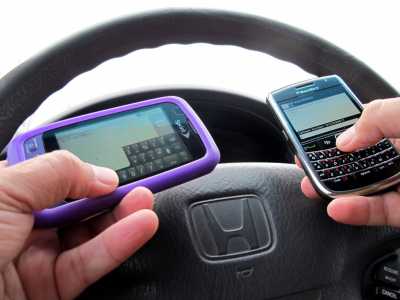20 Nov Sending That Quick Text While Driving Can Kill You
MedicalResearch.com Interview with:
 Ole J. Johansson
Ole J. Johansson
Junior researcher
Master’s in social psychology
Institute of Transport Economics
MedicalResearch.com: What is the background for this study?
Response: Many countries have bans on driving while distracted and would fine drivers for texting while driving. Furthermore, people mostly know about the dangers of not paying attention to the traffic. Still, many people do engage in distracting behaviors. Thus, in this study, I wanted to examine:
a) Who are more likely to engage with distractors?
b) Is there an easy way to help people avoid distractions?
From these two points, we developed the study to engage with distracted driving from a psychological and scientific point of view.
Specifically using the theory of planned behavior and the big five to answer point a) and implementation intentions to answer point b).
MedicalResearch.com: What are the main findings?
Response: We hoped to find a large reduction in distracted driving owing to the intervention method, and thus suggest that this method should be widely used during traffic education or directly towards at-risk groups. As the intervention failed to show a significant effect, we think that the many points discussing reasons for this null-effect in the article will help future research in reducing drivers’ distractions. In addition, I think that the article contains crucial information about the process of research, with special emphasis on drivers’ distractions in a Norwegian context.
From regression models, we found that young males with poor attitudes are more likely to be distracted, along with those who drive more often. The article also outlines effects of attitudes, norms, perceived behavioral control and personality traits on self-reported distracted driving.
MedicalResearch.com: What should clinicians and patients take away from your report?
Response: I hope readers will realize that “just sending a quick text” could be extremely dangerous, both for themselves and others. And that authorities will find both the failed intervention and the characterization of who are more prone to distracted driving very useful in their work to prevent of traffic accidents.
MedicalResearch.com: What recommendations do you have for future research as a result of this study?
Response: Future research could benefit from exploring measures of sensation-seeking and risk-taking, in addition to a re-operationalization of distractive behaviors. Specifically, they should try to avoid diffusion of effects by averaging items into an index of distraction.
MedicalResearch.com: Thank you for your contribution to the MedicalResearch.com community.
Citation:
Front. Psychol., 17 November 2017 | https://doi.org/10.3389/fpsyg.2017.01957
“Maybe I Will Just Send a Quick Text…” – An Examination of Drivers’ Distractions, Causes, and Potential Interventions
Ole J. Johansson* and Aslak Fyhri
Institute of Transport Economics, Oslo, Norway
Note: Content is Not intended as medical advice. Please consult your health care provider regarding your specific medical condition and questions.
[wysija_form id=”1″]
Last Updated on November 20, 2017 by Marie Benz MD FAAD
